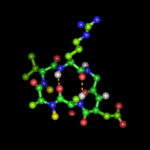Description:
Calendula officinalis is a popular medicinal plant from the plant kingdom’s Asteraceae family that has been used for millennia. This plant contains flavonoids, triterpenoids, glycosides, saponins, carotenoids, volatile oil, amino acids, steroids, sterols, and quinines.
Overview of Benefits:
Many ailments have been treated with the plant frequently used in homeopathic medicine. Additionally, it can be cytotoxic and inhibit tumor growth. It functions as an antimicrobial, antioxidant, anti-inflammatory, antiseptic, anti-viral, hepatoprotective, and antidiabetic medicine. It is also applied to the skin to treat various conditions, including inflammation of the skin, open wounds, and laceration wounds that bleed. Additionally, it is used to heal minor ailments such as razor burns and wind burns.
Anti Inflammatory
CO is currently being investigated, as it exhibits excellent anti-inflammatory activity. Alkaloids, tannins, flavonoids, essential oils, sterols, saponins, carotenoids, triterpene alcohols, mucilage, polysaccharides, and resin are only a few of the categories of secondary metabolites that the plant has that are correlated with the anti-inflammatory characteristics. Dried flower heads or dried ligulate flowers are plant components that are utilized in medicine and cosmetics. The ligulate flowers are rich in triterpene alcohols, triterpene saponins, fatty acid esters, flavonoids, carotenoids, coumarins, hydrocarbons, essential oils, and fatty acids. Using in vivo pharmacological testing, it has been determined that the triterpenoid fatty acid esters are responsible for the anti-inflammatory effects of Calendula flowers. The lauryl, myristoyl, and palmitoyl esters of faradiol are the most prevalent of these, demonstrating that flower extract of CO was much more effective for treating both acute (caused by dextran and carrageenan) and chronic (caused by formalin) swelling in mice.
Antioxidant Activity
Plant polyphenols such as flavonoids are among the most significant natural compounds with active antioxidant properties. The radical scavenging or chelating flavonoids are caused by their hydroxyl group content. The family of antioxidants as phenolic chemicals, on the other hand, operate as free radical terminators. Hence, CO’s high flavonoid and phenolic phytochemical content contribute to its antioxidant activity, which can further promote its strong radical-scavenging capacity and confer protective effects. The leaves and petals of the CO plant contain natural sources of antioxidants. As a result of riboflavin’s photoreduction, it has been claimed that CO extract scavenges hydroxyl and superoxide radicals. Pandey et al. examined the antioxidant properties of the leaves and flowers of CO by using TBA (thiobarbituric acid) and FTC (ferric thiocyanate) techniques.
Cytotoxic and Anti-Tumor Activity
Saponin, one of the separated active compounds of CO, has been shown to exhibit antimutagenic action. The interest in the purported anti-tumor activity of CO extracts and components has grown with the rise of complementary and alternative medicine based on nutrients as cancer treatment. Cruceriu et al. demonstrated the anti-tumor activity of methanolic extracts of CO using a cell line study. The authors reported that CO extracts could exert anti-cancer activity by inducing apoptosis, activating caspase 3 and caspase 7 at a protein level, and downregulating cyclin D1, D3, A, E, and several cyclin-dependent kinases.
Conclusions:
Calendula species have shown tremendous health advantages from prehistoric times to the present. The present state-of-the-art CO in the health sciences realm has been rigorously examined and briefly explained in this study with insights into their molecular processes. Additionally, many CO-containing drug delivery methods and patents have been developed to improve solubility, targeting, and stability, and their active components have been considered in this analysis. As a result, it is envisioned that this review will act as a foundation for scientists, agronomists, and even small-scale nutriental industries to integrate the information that is currently available on CO and realize the full pharmacological, agricultural, and industrial potential of this fascinating medicinal plant.













